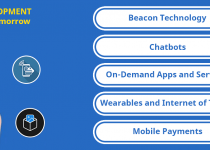What Challenges Are Faced in Building Software and How to Overcome Them

In today’s fast-paced world, managing building information efficiently is crucial for businesses across various industries. Traditional methods of storing building plans and documentation, whether in paper form or fragmented digital files, pose significant challenges. However, with the advancement of technology, building plans software and as-built software solutions have emerged to streamline facility management processes. Despite their benefits, implementing and utilizing such software comes with its own set of challenges. Let’s delve into these challenges and explore effective strategies to overcome them.
Understanding the Challenges:
Integration with Existing Systems:
-
- Often, businesses already have established facility management software in place. Integrating new building plans software seamlessly with existing systems can be challenging.
- Compatibility issues may arise, leading to data inconsistency and workflow disruptions.
User Adoption and Training:
- Introducing new software requires thorough training for users to effectively utilize its features.
- Resistance to change among employees may hinder the adoption process, resulting in underutilization of the software’s capabilities.
Data Migration and Organization:
- Transitioning from paper-based or disparate digital systems to a unified building plans software involves complex data migration processes.
- Ensuring accurate organization and categorization of data within the software is crucial for easy accessibility and retrieval.
Overcoming the Challenges:
Comprehensive Evaluation and Selection:
-
- Before implementing building plans software, conduct a thorough evaluation of available options.
- Choose software that offers seamless integration with existing facility management systems and provides scalability to accommodate future needs.
Robust Training Programs:
- Invest in comprehensive training programs to familiarize users with the functionalities of the software.
- Provide ongoing support and resources to address any challenges or questions that arise during the implementation phase.
Collaborative Approach:
- Involve key stakeholders and end-users in the decision-making process from the outset.
- Foster a culture of collaboration and open communication to encourage buy-in and active participation in utilizing the software.
Data Migration Strategy:
- Develop a well-defined data migration strategy, including data cleansing, mapping, and validation processes.
- Ensure compatibility and interoperability between existing data formats and the software’s data structure.
Continuous Improvement and Feedback:
- Regularly solicit feedback from users to identify areas for improvement and optimization.
- Implement updates and enhancements to the software based on user feedback and evolving industry requirements.
Conclusion
Building plans software and as-built software solutions offer tremendous benefits for streamlining facility management processes and enhancing operational efficiency. However, the successful implementation of such software requires careful consideration of the challenges involved and proactive strategies to overcome them. By addressing integration, user adoption, data migration, and fostering a culture of collaboration, businesses can maximize the value derived from their investment in building plans software, ultimately creating a more efficient and productive environment for managing building information.
--------------------------------
Guestbeat.com Notice!
Audience discretion is needed, Read TOS.
Submit Guest Post / Read Latest / Category List
App & Rate-Us / Subscribe Daily Newsletter (FREE)



